Portrait of Kraziai
by Mindaugas Kavaliauskas
Photographs: Mindaugas Kavaliauskas
Text: Mindaugas Kavaliauskas
Publisher: Šviesos raštas
152 pages
Pictures: 141
Year: 2009
ISBN: 978-609-8032-02-4
Price: 39.90 €
During his studies in the French National school of Photography (Arles) and National School of Fine Arts (Paris), Mindaugas Kavaliauskas was inspired by the photograhic documentary work of Walker Evans, and particularly, a book by another photographer Paul Strand and Cesare Zavattini “Un Paese”, which depicted the transitory life of a small village of Luzzara. Having spent about four years in France, USA and Switzerland, Mindaugas Kavaliauskas was invited to visit Kražiai, where a friend of him, a priest was serving as the parish dean. Eager to work back in Lithuania, the photographer found a situation which reminded him of the Luzzara of Paul Strand, depicted 50 years earlier - changing economic conditions, ageing community. But in Kražiai this was topped by the beginning of preparations to the 750th anniversary of founding of Kražiai. Reconstruction of the only remaining church, of the Renaissance epoque college. Behind the image of the glorious past, Mindaugas Kavaliauskas found a colourful community of Kražiai. Milk, as the blood of local economy enroled most of population in its working cycle. Teenagers earned for their mobile accounts by working the hay, while families struggled their way to Europe by selling tons of milk for unbelievably low price, as they consideresd it. Religious festivities of Saint Roche, attracting Kražiai people from all over the world, revealed the strong identity and pride. Historical paradoxes, like for example, a former NKVD house serving nowadays as a restaurant, and hosting funeral dinners, generated varieties of points of view on civic, and historical matters. Young guys and families leaving to work abroad and almost every day happening funerals emphasized the few of the young families starting their life in the middle of social nowhere. Numerous social groups – choirs, youth clubs, senior clubs, Christmas checkers competitions and other events proved the locals to be culturally implicated. The Lithuanian School of Photography, which emerged in the 1960s, has been considered as the most influential photographic style of the Eastern and Central Europe, bears particular respect to the photography of country communities. Contrarily to its typical exaggerated point of view and that of the last wave of 20th century photography of European countryside, Mindaugas Kavaliauskas decided to avoid some extremities: the romantic imagery of religious life and the brutal representation of an eternally drunk and desperate province life. Consequently, this became a sober photographic vision, constructed from the perspective of typical situations and having rare apparitions of the decisive moment. Aided by his wife, sociologist Kristina Juraite, Mindaugas Kavaliauskas not only took pictures, but also recorded stories and points of views of Kražiai people on kilometres of audio tape. Photographer's intention to create several portraits turned into a long term project that started in the autumn of 2001 and continues up till now. Even though the ultimate shape of A Portrait of Kražiai is in following the time flow. People who posed for portraits and shared their experience were fading, babies were becoming children, ruins of 17th century college standing up to a palaces, summers were to hiding under winter snow. Mindaugas Kavaliauskas ehibits the photographs of the series quite extensively. Portrait of Kražiai was on display at museums, galleries, in Lithuania: Vilnius, Kaunas, Klaipėda, Kupiškis, Panevėžys, Druskininkai, Kražiai, also abroad – in photo museums, photo festivals, galleries, culture centres in Finland, Sweden, Poland, Russia, Germany, France, Netherlands, Switzerland, China, Australia. At the end of 2009, a book “Portrait of Kražiai” (23 cm x30 cm, 152 p., 141 photographs, hardcover) was published by „Šviesos raštas“, Kaunas, Lithuania.
More books by Mindaugas Kavaliauskas
-
Portrait of Kraziai (signed)
by Mindaugas Kavaliauskas
Euro 49.90 -
Customs Ignored: Lithuanian and Australian Photography
by Mindaugas Kavaliauskas
sold out -
travel' AIR (signed)
by Mindaugas Kavaliauskas
Euro 27 -
D., G. ir Kiti (signed)
by Mindaugas Kavaliauskas
Euro 22 17.60
more books tagged »Lithuanian« | >> see all
-
MUSU KAUNAS (signed)
by Romualdas Rakauskas
Euro 165 -
Naked (signed)
by Rimaldas Viksraitis
sold out -
Grimaces of the weary village 1976 - 2001 (signed- last copy)
by Rimaldas Viksraitis
Euro 295 -
Grimaces of the Weary Villages (signed)
by Rimaldas Viksraitis
sold out -
Homo Viksraitis (signed)
by Rimaldas Viksraitis
Euro 49 -
Vitas Luckus “Biography”
by Margarita Matulytė, Tatjana Luckienė-Aldag
Euro 55
more books tagged »travel« | >> see all
-
As Dust Alights (signed)
by Vincent Delbrouck
sold out -
The Amalfi Coast (signed)
by Martin Parr
sold out -
Ukraine. Fotografien
by Reiner Riedler
sold out -
Grand Paris (signed - last two copies)
by Martin Parr
Euro 125 -
2224 Kolkata
by Pierre Defaix
Euro 49 -
America, my way (signed)
by Matej Sitar
Euro 65
more books tagged »Eastern Europe« | >> see all
-
If I exorcise my devils my angels may leave too - Eclisse # 5 ...
by Nemanja Pančić & Marco Risović
sold out -
The Faces of the Invisible City (review copy)
by Ivan Blazhev
Euro 25 12.50 -
Rodina
by Irina Ruppert
sold out -
Vaclav Havel
by Tomki Nemec
Euro 35 -
Ukraine. Fotografien (signed - last copy)
by Reiner Riedler
Euro 150 -
Le bucarestois (signed)
by Emilie Gafner
Euro 25
more books tagged »tradition« | >> see all
-
Ukraine (signed)
by Reiner Riedler
Euro 20 -
Ukraine
by Reiner Riedler
Euro 18 -
Until Death Do Us Part
by Thomas Sauvin
Euro 42 -
Once a Year
by Axel Hoedt
sold out -
Boiko (signed + print)
by Jan Brykczynski
sold out -
Bhutan A Certain Modernity
by Serena Chopra
sold out
Random selection from the Virtual bookshelf josefchladek.com
Portrait of Kraziai
by Mindaugas Kavaliauskas
Photographs: Mindaugas Kavaliauskas
Text: Mindaugas Kavaliauskas
Publisher: Šviesos raštas
152 pages
Pictures: 141
Year: 2009
ISBN: 978-609-8032-02-4
Price: 39.90 €
During his studies in the French National school of Photography (Arles) and National School of Fine Arts (Paris), Mindaugas Kavaliauskas was inspired by the photograhic documentary work of Walker Evans, and particularly, a book by another photographer Paul Strand and Cesare Zavattini “Un Paese”, which depicted the transitory life of a small village of Luzzara. Having spent about four years in France, USA and Switzerland, Mindaugas Kavaliauskas was invited to visit Kražiai, where a friend of him, a priest was serving as the parish dean. Eager to work back in Lithuania, the photographer found a situation which reminded him of the Luzzara of Paul Strand, depicted 50 years earlier - changing economic conditions, ageing community. But in Kražiai this was topped by the beginning of preparations to the 750th anniversary of founding of Kražiai. Reconstruction of the only remaining church, of the Renaissance epoque college. Behind the image of the glorious past, Mindaugas Kavaliauskas found a colourful community of Kražiai. Milk, as the blood of local economy enroled most of population in its working cycle. Teenagers earned for their mobile accounts by working the hay, while families struggled their way to Europe by selling tons of milk for unbelievably low price, as they consideresd it. Religious festivities of Saint Roche, attracting Kražiai people from all over the world, revealed the strong identity and pride. Historical paradoxes, like for example, a former NKVD house serving nowadays as a restaurant, and hosting funeral dinners, generated varieties of points of view on civic, and historical matters. Young guys and families leaving to work abroad and almost every day happening funerals emphasized the few of the young families starting their life in the middle of social nowhere. Numerous social groups – choirs, youth clubs, senior clubs, Christmas checkers competitions and other events proved the locals to be culturally implicated. The Lithuanian School of Photography, which emerged in the 1960s, has been considered as the most influential photographic style of the Eastern and Central Europe, bears particular respect to the photography of country communities. Contrarily to its typical exaggerated point of view and that of the last wave of 20th century photography of European countryside, Mindaugas Kavaliauskas decided to avoid some extremities: the romantic imagery of religious life and the brutal representation of an eternally drunk and desperate province life. Consequently, this became a sober photographic vision, constructed from the perspective of typical situations and having rare apparitions of the decisive moment. Aided by his wife, sociologist Kristina Juraite, Mindaugas Kavaliauskas not only took pictures, but also recorded stories and points of views of Kražiai people on kilometres of audio tape. Photographer's intention to create several portraits turned into a long term project that started in the autumn of 2001 and continues up till now. Even though the ultimate shape of A Portrait of Kražiai is in following the time flow. People who posed for portraits and shared their experience were fading, babies were becoming children, ruins of 17th century college standing up to a palaces, summers were to hiding under winter snow. Mindaugas Kavaliauskas ehibits the photographs of the series quite extensively. Portrait of Kražiai was on display at museums, galleries, in Lithuania: Vilnius, Kaunas, Klaipėda, Kupiškis, Panevėžys, Druskininkai, Kražiai, also abroad – in photo museums, photo festivals, galleries, culture centres in Finland, Sweden, Poland, Russia, Germany, France, Netherlands, Switzerland, China, Australia. At the end of 2009, a book “Portrait of Kražiai” (23 cm x30 cm, 152 p., 141 photographs, hardcover) was published by „Šviesos raštas“, Kaunas, Lithuania.
More books by Mindaugas Kavaliauskas
-
Portrait of Kraziai (signed)
by Mindaugas Kavaliauskas
Euro 49.90 -
Customs Ignored: Lithuanian and Australian Photography
by Mindaugas Kavaliauskas
sold out -
travel' AIR (signed)
by Mindaugas Kavaliauskas
Euro 27 -
D., G. ir Kiti (signed)
by Mindaugas Kavaliauskas
Euro 22 17.60
more books tagged »Lithuanian« | >> see all
-
MUSU KAUNAS (signed)
by Romualdas Rakauskas
Euro 165 -
Naked (signed)
by Rimaldas Viksraitis
sold out -
Grimaces of the weary village 1976 - 2001 (signed- last copy)
by Rimaldas Viksraitis
Euro 295 -
Grimaces of the Weary Villages (signed)
by Rimaldas Viksraitis
sold out -
Homo Viksraitis (signed)
by Rimaldas Viksraitis
Euro 49 -
Vitas Luckus “Biography”
by Margarita Matulytė, Tatjana Luckienė-Aldag
Euro 55
more books tagged »travel« | >> see all
-
As Dust Alights (signed)
by Vincent Delbrouck
sold out -
The Amalfi Coast (signed)
by Martin Parr
sold out -
Ukraine. Fotografien
by Reiner Riedler
sold out -
Grand Paris (signed - last two copies)
by Martin Parr
Euro 125 -
2224 Kolkata
by Pierre Defaix
Euro 49 -
America, my way (signed)
by Matej Sitar
Euro 65
more books tagged »Eastern Europe« | >> see all
-
If I exorcise my devils my angels may leave too - Eclisse # 5 ...
by Nemanja Pančić & Marco Risović
sold out -
The Faces of the Invisible City (review copy)
by Ivan Blazhev
Euro 25 12.50 -
Rodina
by Irina Ruppert
sold out -
Vaclav Havel
by Tomki Nemec
Euro 35 -
Ukraine. Fotografien (signed - last copy)
by Reiner Riedler
Euro 150 -
Le bucarestois (signed)
by Emilie Gafner
Euro 25
more books tagged »tradition« | >> see all
-
Ukraine (signed)
by Reiner Riedler
Euro 20 -
Ukraine
by Reiner Riedler
Euro 18 -
Until Death Do Us Part
by Thomas Sauvin
Euro 42 -
Once a Year
by Axel Hoedt
sold out -
Boiko (signed + print)
by Jan Brykczynski
sold out -
Bhutan A Certain Modernity
by Serena Chopra
sold out
Random selection from the Virtual bookshelf josefchladek.com
Portrait of Kraziai
by Mindaugas Kavaliauskas
Photographs: Mindaugas Kavaliauskas
Text: Mindaugas Kavaliauskas
Publisher: Šviesos raštas
152 pages
Pictures: 141
Year: 2009
ISBN: 978-609-8032-02-4
Price: 39.90 €
During his studies in the French National school of Photography (Arles) and National School of Fine Arts (Paris), Mindaugas Kavaliauskas was inspired by the photograhic documentary work of Walker Evans, and particularly, a book by another photographer Paul Strand and Cesare Zavattini “Un Paese”, which depicted the transitory life of a small village of Luzzara. Having spent about four years in France, USA and Switzerland, Mindaugas Kavaliauskas was invited to visit Kražiai, where a friend of him, a priest was serving as the parish dean. Eager to work back in Lithuania, the photographer found a situation which reminded him of the Luzzara of Paul Strand, depicted 50 years earlier - changing economic conditions, ageing community. But in Kražiai this was topped by the beginning of preparations to the 750th anniversary of founding of Kražiai. Reconstruction of the only remaining church, of the Renaissance epoque college. Behind the image of the glorious past, Mindaugas Kavaliauskas found a colourful community of Kražiai. Milk, as the blood of local economy enroled most of population in its working cycle. Teenagers earned for their mobile accounts by working the hay, while families struggled their way to Europe by selling tons of milk for unbelievably low price, as they consideresd it. Religious festivities of Saint Roche, attracting Kražiai people from all over the world, revealed the strong identity and pride. Historical paradoxes, like for example, a former NKVD house serving nowadays as a restaurant, and hosting funeral dinners, generated varieties of points of view on civic, and historical matters. Young guys and families leaving to work abroad and almost every day happening funerals emphasized the few of the young families starting their life in the middle of social nowhere. Numerous social groups – choirs, youth clubs, senior clubs, Christmas checkers competitions and other events proved the locals to be culturally implicated. The Lithuanian School of Photography, which emerged in the 1960s, has been considered as the most influential photographic style of the Eastern and Central Europe, bears particular respect to the photography of country communities. Contrarily to its typical exaggerated point of view and that of the last wave of 20th century photography of European countryside, Mindaugas Kavaliauskas decided to avoid some extremities: the romantic imagery of religious life and the brutal representation of an eternally drunk and desperate province life. Consequently, this became a sober photographic vision, constructed from the perspective of typical situations and having rare apparitions of the decisive moment. Aided by his wife, sociologist Kristina Juraite, Mindaugas Kavaliauskas not only took pictures, but also recorded stories and points of views of Kražiai people on kilometres of audio tape. Photographer's intention to create several portraits turned into a long term project that started in the autumn of 2001 and continues up till now. Even though the ultimate shape of A Portrait of Kražiai is in following the time flow. People who posed for portraits and shared their experience were fading, babies were becoming children, ruins of 17th century college standing up to a palaces, summers were to hiding under winter snow. Mindaugas Kavaliauskas ehibits the photographs of the series quite extensively. Portrait of Kražiai was on display at museums, galleries, in Lithuania: Vilnius, Kaunas, Klaipėda, Kupiškis, Panevėžys, Druskininkai, Kražiai, also abroad – in photo museums, photo festivals, galleries, culture centres in Finland, Sweden, Poland, Russia, Germany, France, Netherlands, Switzerland, China, Australia. At the end of 2009, a book “Portrait of Kražiai” (23 cm x30 cm, 152 p., 141 photographs, hardcover) was published by „Šviesos raštas“, Kaunas, Lithuania.
More books by Mindaugas Kavaliauskas
-
Portrait of Kraziai (signed)
by Mindaugas Kavaliauskas
Euro 49.90 -
Customs Ignored: Lithuanian and Australian Photography
by Mindaugas Kavaliauskas
sold out -
travel' AIR (signed)
by Mindaugas Kavaliauskas
Euro 27 -
D., G. ir Kiti (signed)
by Mindaugas Kavaliauskas
Euro 22 17.60
more books tagged »Lithuanian« | >> see all
-
MUSU KAUNAS (signed)
by Romualdas Rakauskas
Euro 165 -
Naked (signed)
by Rimaldas Viksraitis
sold out -
Grimaces of the weary village 1976 - 2001 (signed- last copy)
by Rimaldas Viksraitis
Euro 295 -
Grimaces of the Weary Villages (signed)
by Rimaldas Viksraitis
sold out -
Homo Viksraitis (signed)
by Rimaldas Viksraitis
Euro 49 -
Vitas Luckus “Biography”
by Margarita Matulytė, Tatjana Luckienė-Aldag
Euro 55
more books tagged »travel« | >> see all
-
As Dust Alights (signed)
by Vincent Delbrouck
sold out -
The Amalfi Coast (signed)
by Martin Parr
sold out -
Ukraine. Fotografien
by Reiner Riedler
sold out -
Grand Paris (signed - last two copies)
by Martin Parr
Euro 125 -
2224 Kolkata
by Pierre Defaix
Euro 49 -
America, my way (signed)
by Matej Sitar
Euro 65
more books tagged »Eastern Europe« | >> see all
-
If I exorcise my devils my angels may leave too - Eclisse # 5 ...
by Nemanja Pančić & Marco Risović
sold out -
The Faces of the Invisible City (review copy)
by Ivan Blazhev
Euro 25 12.50 -
Rodina
by Irina Ruppert
sold out -
Vaclav Havel
by Tomki Nemec
Euro 35 -
Ukraine. Fotografien (signed - last copy)
by Reiner Riedler
Euro 150 -
Le bucarestois (signed)
by Emilie Gafner
Euro 25
more books tagged »tradition« | >> see all
-
Ukraine (signed)
by Reiner Riedler
Euro 20 -
Ukraine
by Reiner Riedler
Euro 18 -
Until Death Do Us Part
by Thomas Sauvin
Euro 42 -
Once a Year
by Axel Hoedt
sold out -
Boiko (signed + print)
by Jan Brykczynski
sold out -
Bhutan A Certain Modernity
by Serena Chopra
sold out
Random selection from the Virtual bookshelf josefchladek.com

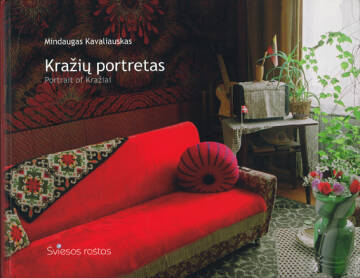







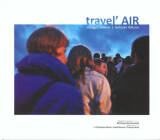


























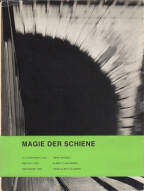

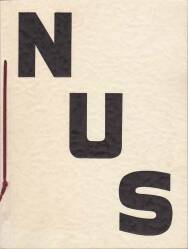


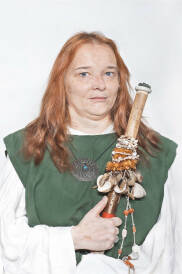
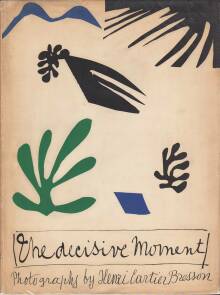
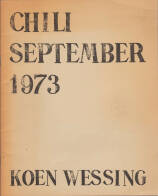
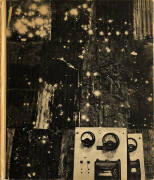
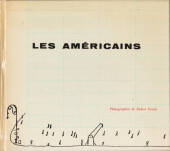
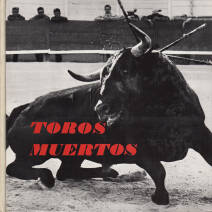
;jpg?c=8c505814bb215507267c04b84d48d520)